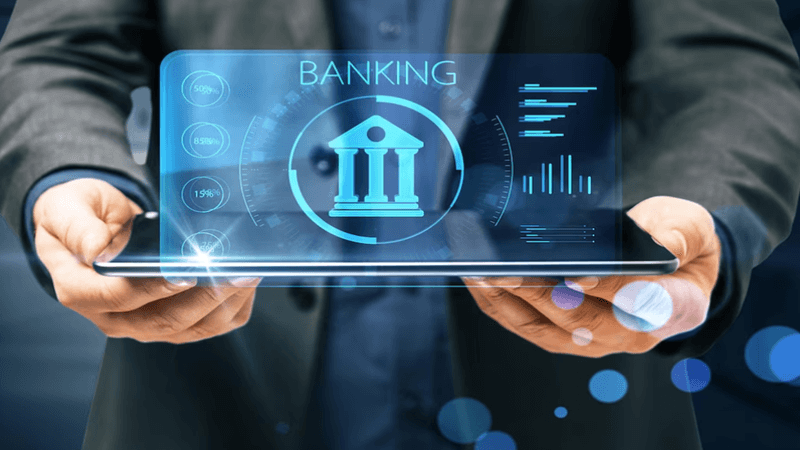Key Takeaways
- The role of IT services in the modern banking industry.
- Critical IT solutions that banks are adopting.
- Real-life examples of successful IT implementations in banking.
Modern banking is evolving through advanced IT services, enhancing efficiency and customer experience. Technologies like mobile banking apps, AI-driven chatbots, and blockchain-secure transactions are revolutionizing financial services. These innovations streamline operations, improve security, and provide customers with convenient digital solutions for their banking needs.
The Role of IT Services in Modern Banking
In today’s fast-paced financial environment, banks must harness advanced IT services for banks to stay competitive and secure. By integrating state-of-the-art technologies, banks can enhance operational efficiency and provide superior customer experiences. Adopting these technologies is essential for streamlining operations and meeting clients’ evolving needs. Financial institutions that fail to invest in such IT services risk falling behind in the market, where operational speed and security are paramount.
This shift is primarily made possible by AI and machine learning, which let banks automate procedures and create data-driven strategies, Increasing efficiency and helping identify and mitigate risks effectively. Incorporating AI technologies allows banks to process vast amounts of data quickly, providing previously unattainable insights. This means improved risk management, fraud detection, and personalized customer service.
Critical IT Solutions for Banks
In the banking industry, several IT solutions are becoming more popular. They all have unique benefits that add up to a more safe and productive operation:
- Cloud Computing: By reducing costs and improving scalability, cloud computing allows banks to adapt quickly to changing demands. This flexibility is crucial for managing large volumes of transactions and data, ensuring banks can offer consistent and reliable customer services.
- Blockchain: This technology enhances security and transparency in banking transactions. Blockchain’s decentralized nature makes it a formidable barrier against fraud, ensuring that financial records are immutable and easily traceable.
- Big Data Analytics: Providing insights for better decision-making, big data analytics helps banks understand customer behavior, optimize their offerings, and improve customer retention. It is also essential for creating customized financial products and focused marketing campaigns.
- Cybersecurity: Safeguarding confidential financial information is essential for upholding client confidence and adhering to legal mandates. Advanced cybersecurity measures ensure the integrity and confidentiality of customer data while defending against sophisticated cyberattacks.
Implementing these solutions helps banks stay ahead in the competitive landscape while ensuring data integrity and customer trust. These technologies address current challenges and prepare financial institutions for future advancements in the industry.
Enhancing Customer Experience through IT
One major benefit of IT in banking is the significant improvement in customer experience. Banks can offer smoother, more engaging experiences through personalized services and automated customer support. For instance, customized customer journeys have increased customer satisfaction and loyalty. Banks can customize their services by leveraging data analytics to meet customer needs, offering personalized financial advice and tailored product recommendations.
This level of personalization extends to customer support as well. Automated systems like chatbots provide quick and accurate responses to customer inquiries, reducing wait times and improving overall satisfaction. Additionally, AI-based mobile banking apps can offer real-time assistance, helping customers manage their finances more effectively.
Case Study: Innovative IT Solutions in Banking
Many banks have successfully integrated advanced IT services, with notable examples demonstrating the significant benefits of such initiatives. A European central bank utilized AI to streamline its loan approval process, drastically reducing customer turnaround time. This approach not only enhanced efficiency but also improved customer satisfaction. By automating the evaluation of loan applications, the bank could process requests within minutes, compared to the traditional method that took several days.
Another example is the adoption of blockchain technology by a leading international bank to enhance the security and transparency of its transactions. This implementation has resulted in reduced fraud incidents and increased trust among clients. The bank’s customers now have greater confidence in the integrity of their financial transactions, knowing that their data is securely stored and easily verifiable.
Future Trends in IT for Banking
Given the potential for further industrial transformation through technology development, the future of IT in banking is bright. Improvements in quantum computing and advanced encryption will likely set new security and processing power standards. Quantum computing, in particular, holds the potential to solve complex problems at unprecedented speeds, enabling banks to process transactions and analyze data more efficiently than ever before.
Meanwhile, the rise of open banking and APIs will promote a more interconnected and competitive landscape. Open banking, which allows third-party developers to create apps and services around financial institutions, creates a more dynamic and customer-focused banking sector. This shift is expected to foster incredible innovation and give customers more choices and better services.
Challenges in Integrating IT Services
Despite the significant advantages, integrating IT services poses several challenges. These include the high cost of technology, regulatory compliance, and the need for continuous staff training. Addressing these issues requires strategic planning and investment from banks. The initial costs of implementing advanced IT solutions can be substantial, and banks must ensure that their investments yield long-term benefits.
Regulatory compliance is another critical challenge, as financial institutions must adhere to stringent regulations designed to protect customer data and ensure the economic system’s stability. Staying compliant with these regulations requires continuous monitoring and updating of IT systems. Additionally, banks must invest in training their employees to use new technologies effectively, ensuring their workforce has the skills to navigate the digital landscape.
Conclusion
IT services have become indispensable in the banking sector, offering numerous benefits, from operational efficiencies to enhanced customer experiences. As the industry progresses, keeping up with technological advancements and integrating them will be essential for banks looking to preserve their competitive advantage. Financial institutions that adopt these advancements will be more prepared to satisfy the needs of an increasingly digital market, offering safe, effective, and tailored services to their clients.
For more info visit Business Stylish
